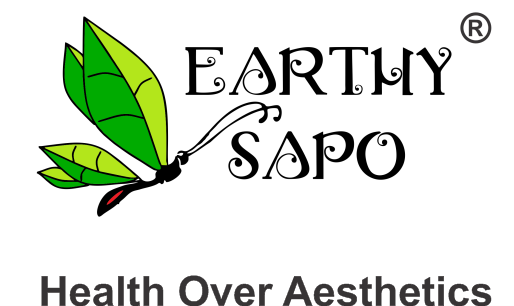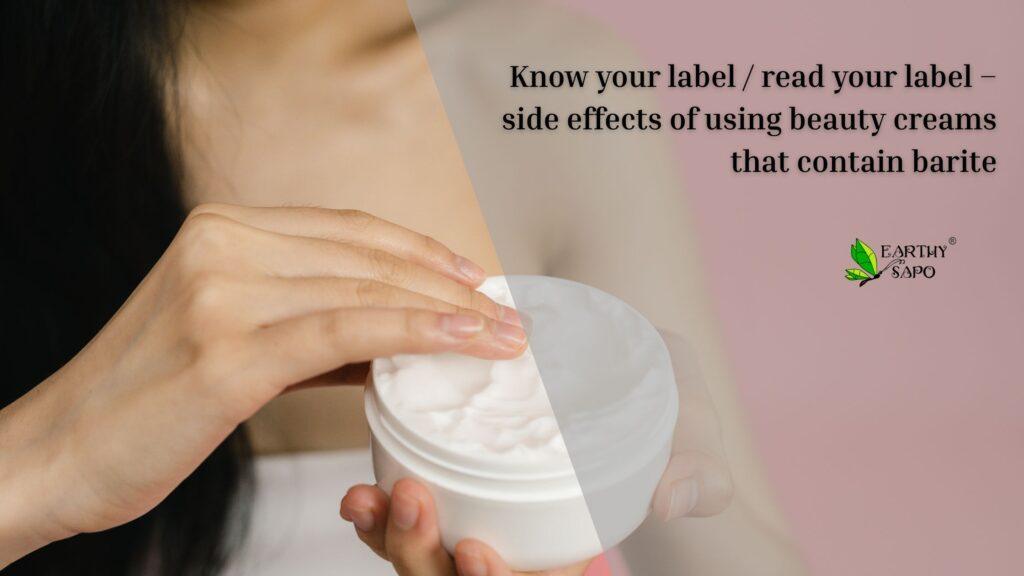Uncategorized
Know Your Label / Read Your Label – Side Effects of Using Beauty Creams that Contain Barite
In the realm of selecting skincare products, one often overlooked yet crucial step is to carefully read the labels and gain an understanding of the ingredients employed. Unfortunately, many individuals remain unaware of the importance of scrutinizing the ingredient list and researching the chemicals in their chosen skincare products.
Consequently, a significant knowledge gap exists, allowing potentially toxic chemicals in skincare to go unnoticed and unexamined by consumers. One such ingredient that has recently garnered attention is Barite powder, or Barium sulfate, commonly used in commercial beauty creams. While barite powder uses include contributing to a creamy texture and imparting a silky finish, it is imperative to grasp its potential side effects on the skin.
What is Barite?
Barite is a mineral that is commonly used in the beauty industry. It is a white, odourless powder often used in beauty creams and lotions for its opacifying and thickening properties. Barite powder is also used to produce various other products, such as paint, rubber, and plastics. However, its inclusion in skincare products raises significant concerns due to its potential harmful effects.
Side Effects of Barite:
Barite has the potential to cause a range of side effects when used in beauty creams. It can irritate the skin, leading to redness, itching, and inflammation. Barite can also dry out the skin, causing it to feel rough and scaly. The mineral can clog pores, leading to breakouts and acne, especially for those with oily skin.
Over time, barite powder uses in skincare can cause long-term damage to the skin, such as premature ageing and hyperpigmentation. Ingesting Barite can cause gastrointestinal problems, such as nausea and vomiting, and even lead to poisoning if consumed in large amounts.
How to Avoid Barite in Beauty Creams?
Avoid products that list Barite or Barium Sulfate in the ingredient list. Following proper product labeling practices is essential to ensure consumer safety. Look for products free from synthetic opacifiers. Choose products that are labelled as “non-comedogenic” or “non-acnegenic” to avoid clogged pores and breakouts.
Check the pH of the product, as Barite can alter the skin’s pH balance, leading to irritation and dryness. Always do a patch test of new products before applying them to the face to check for any adverse reactions. Being informed about product label guidelines helps consumers make safer choices.
What Are the Additional Alternatives to Barite?
Look for “natural” or “organic” products to ensure they are free from toxic chemicals in skincare. Several natural and safe alternatives to barite powder uses can be incorporated into beauty creams.
You can even make your beauty products using natural ingredients such as aloe vera, coconut oil, honey, and turmeric. Mica, for example, is a natural mineral commonly used as an opacifier in cosmetics. It is non-toxic, non-irritating, and non-comedogenic, making it suitable for all skin types.
Kaolin clay is another natural opacifier that is gentle on the skin and can help to absorb excess oil and impurities. Zinc oxide is a mineral often used as a natural sunscreen with opacifying properties. It is non-toxic and non-irritating, making it ideal for sensitive skin. Titanium dioxide is a natural mineral commonly used in cosmetics as a whitening agent and opacifier. It is non-toxic and non-comedogenic, making it suitable for all skin types.
The Importance of Reading Product Labels
In the quest for safe and effective beauty products, reading labels becomes essential to avoid potential harm from ingredients like barite powder. Shockingly, studies have shown that a staggering 60% of what we apply to our skin gets absorbed into our bloodstream, underscoring the importance of being vigilant about the products we choose and understanding product labeling thoroughly.
Furthermore, statistics reveal that the demand for natural and organic beauty products is rising. The global organic personal care market has grown substantially in recent years, with an estimated value of over $15 billion. This increasing demand reflects a growing awareness among consumers who prioritize safer alternatives and seek products free from toxic chemicals in skincare.
Embracing Safer Alternatives
As consumers, we can make informed decisions prioritizing our skin’s health and well-being. Opting for natural alternatives and embracing traditional Indian DIY skincare methods can be a wonderful way to nourish and rejuvenate our skin without subjecting it to unnecessary risks. Not only do these methods often utilize locally sourced ingredients, but they also empower us to take control of what we put on our bodies.

